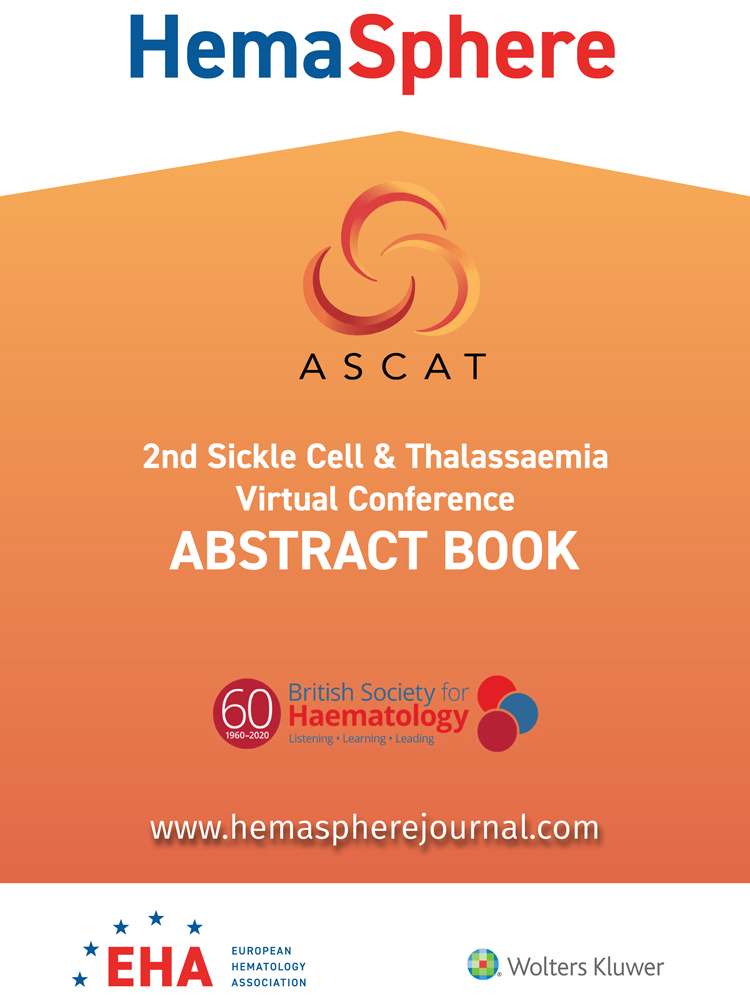S118: LONG-TERM SAFETY AND EFFICACY OF VOXELOTOR FOR PATIENTS WITH SICKLE CELL DISEASE: RESULTS FROM AN OPEN-LABEL EXTENSION OF THE PHASE 3 HOPE TRIAL
Background: Sickle cell disease (SCD), a lifelong, inherited blood disorder, leads to sickle hemoglobin (HbS) formation. HbS polymerization causes red blood cell sickling, leading to hemolysis, chronic anemia, and vaso-occlusive crises (VOCs). Patients with SCD are at higher risk of end-organ damage, increased morbidity, and early mortality due to low hemoglobin (Hb) and increased hemolysis.1
Voxelotor, a HbS polymerization inhibitor, is approved in the US for SCD treatment in adults and adolescent patients aged ≥12 years.2 The randomized, placebo-controlled HOPE trial showed that significantly more patients on voxelotor 1500 mg had a >1 g/dL Hb increase than those on placebo at any time to week 72. These Hb increases were associated with reduced hemolysis markers.3 Here we report an interim analysis of an ongoing open-label extension (OLE) of the
Methods: Patients who completed the phase 3 HOPE trial were eligible to enroll in the multicenter OLE study and receive treatment as long as they continued to receive clinical benefit and/or until they had access to voxelotor through commercialization or a managed access program. All patients received voxelotor 1500 mg as ongoing treatment. Adverse event data were collected from the date of informed consent through 28 days after voxelotor discontinuation. Measurements of Hb and clinical markers of hemolysis are ongoing and summarized here for 48 weeks of the OLE. Data presented are based on an interim data cut (December 31, 2020).
Results: Of the 199 patients who completed the HOPE trial, 178 (89.4%) were enrolled and dosed in the OLE. Median age at enrollment was 25 years (15.7% adolescents, 84.3% adults). At the cutoff date, the median voxelotor exposure duration in the OLE was 69.9 weeks (range: 1.9–102.0 weeks), with 78 patients treated for ≥72 weeks, of whom 52 received voxelotor in the randomized part of the study, for a combined exposure duration ≥144 weeks. Among those who previously received placebo, the mean (SD) Hb change from baseline (ie, start of the OLE) to week 48 was 1.3 (1.51) g/dL, consistent with HOPE trial results. Hemolysis markers improved from baseline to week 48 in patients who received placebo in the HOPE trial (–39.5% indirect bilirubin; –28.6% reticulocytes). Patients who previously received voxelotor in the HOPE trial showed durability of response in Hb and clinical measures of hemolysis in the OLE. The annualized VOC incidence rate was 1.3 (95% CI: 1.1–1.4) events per year across all patients. 83.7% of patients (149/178) experienced a non-SCD-related treatment-emergent adverse event (TEAE), with the most commonly reported being arthralgia, headache, pain, nausea, and pain in extremity. Most non-SCD-related TEAEs were grade 1 or 2. Eleven patients (6.2%) had an adverse event that led to treatment discontinuation. No TEAEs consistent with lack of tissue oxygenation were observed.
Conclusions: In this OLE study, treatment with voxelotor 1500 mg led to improvements in Hb and clinical measures of hemolysis at 48 weeks in patients who received placebo in the HOPE trial and showed durability of response in patients previously treated with voxelotor of any dosage in the HOPE trial. No new safety signals were identified with exposure through a combined 144 weeks of treatment. Per these results, long-term voxelotor treatment is safe, well tolerated, and effective in reducing anemia and hemolysis, with a low rate of VOCs, in patients with SCD.
References
1. Kato GJ, Piel FB, Reid CD, et al. Nat Rev Dis Primers. 2018;4:18010.
2. Oxbryta. Prescribing information. Global Blood Therapeutics; January 2021.
3. Howard J, Ataga KI, Brown RC, et al. Lancet Haematol. 2021;8(5):E323-E333.




